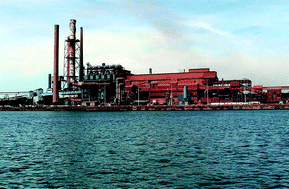A biomonitor as a measure of an ecologically-significant fraction of metals in an industrialized harbour
Abstract
Biomonitors are commonly used to assess levels of bioavailable contaminants in the environment, however the relationships between biomonitor tissue concentrations and ecological effects are rarely assessed. The present study investigated metal contamination within a highly industrialised harbour and ecological effects on sessile invertebrates. The native oyster Saccostrea glomerata was deployed as a biomonitor across twenty-six sites to test for correlations between metal levels in their tissues and the recruitment of hard-substrate invertebrates. Concentrations of lead and copper in oyster tissues were negatively correlated with densities of the dominant barnacle, Amphibalanus variegatus, and positively correlated with densities of the dominant polychaete, Hydroides elegans, and the two native encrusting bryozoans Celloporaria nodulosa and Arachnopusia unicornis. Results suggest that highly localised events drive contaminant availability and that these events pose a significant risk to fauna. Biomonitoring studies may be enhanced by running concurrent ecological surveys.


 Please wait while we load your content...
Please wait while we load your content...